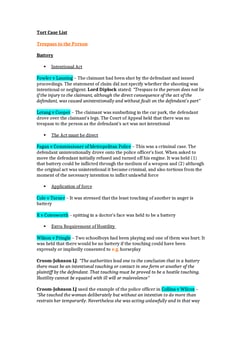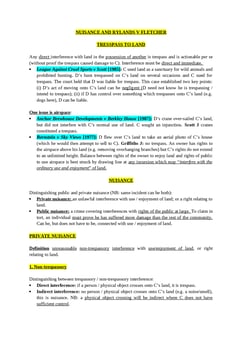McFarlane v EE Caledonia [1994] 2 All ER 1
Judgement for the case McFarlane v EE Caledonia
Table Of Contents
KEY POINTS
-
A claimant may validly use the claim against psychiatric injury through fear of physical injury to himself if he falls into any of the three scenarios:
Where he is in the actual area of danger created by the event, but escapes physical injury by chance or good fortune;
Where the plaintiff is not actually in danger, but because of the sudden and unexpected nature of the event he reasonably thinks that he is; and
Where the plaintiff who is not originally within the area of danger comes into it later.
FACTS
A devastating fire occurred on the oil rig "Piper Alpha" in the North Sea, resulting in complete destruction of the rig and the loss of 164 lives. The "Tharos" vessel, which was aiding in firefighting and rescue efforts, included the plaintiff.
While the plaintiff did not suffer physical injuries, he experienced traumatic events that led to psychiatric injury. He is seeking damages based on the psychological impact of that night.
JUDGEMENT
The court ruled in favor of EE Caledonia Ltd. They do not owe a duty of care to McFarlane.
COMMENTARY
The judgment grapples with the balance between allowing compensation for genuine psychological suffering while avoiding overextending liability. The court's analysis delves into foreseeability, proximity, and the need for clear criteria to establish liability in such cases.
Ultimately, the case contributes to the ongoing evolution of the legal framework surrounding claims for psychiatric injury.
ORIGINAL ANALYSIS
Plaintiff was a painter on an oil rig where there was an explosion and fires killing many people. He claimed for nervous shock as a primary victim.
CA reject his claim on grounds that he could easily have taken cover/removed himself from situation, and it was not reasonably foreseeable that he would have been harmed.
CA
-
In addition to proximity (satisfied - he was 100m from the fire) and reasonable foreseeability that an ordinary man in Plaintiff’s position would suffer psychiatric injury, he had to prove one of 3 possible conditions for personal safety fear requirement:
He was in the actual area of danger created by the event, even though he escaped;
Although not in danger he reasonably thought he was because of the unexpected nature of the event;
He came into danger area as a rescuer.
Stuart Smith LJ
Contests the assertion of Lord Ackner (above) and says that to allow simple bystanders with no connection to those being harmed would be to create a test purely based on reasonable foreseeability because it would allow too many people to claim nervous shock, e.g. if a building falls down.
However in this case it was not reasonably foreseeable that an ordinary man in Plaintiff’s position would suffer nervous shock.
For Further Study on McFarlane v EE Caledonia

A collection of the best GDL notes the director of Oxbridge Notes (an O...
Need instant answers? Our AI exam tutor is here to help.
Ask questions 🙋 Get answers 📔 It's simple 👁️👄👁️
Our AI is educated by the highest scoring students across all subjects and schools. Join hundreds of your peers today.
Get StartedSimilar Cases
Related Product Samples
These product samples contain the same concepts we cover in this case.
| GDL Tort Law | Negligence Psychiatric Harm Notes (5 pages) |
| Tort Law | Negligence Psychiatric Injuries Notes (5 pages) |

 Since 2010, Oxbridge Notes has been a trusted education marketplace, supplying high-quality materials from top achievers at universities like Oxford, Cambridge, LSE, Harvard, and Yale.
Since 2010, Oxbridge Notes has been a trusted education marketplace, supplying high-quality materials from top achievers at universities like Oxford, Cambridge, LSE, Harvard, and Yale.